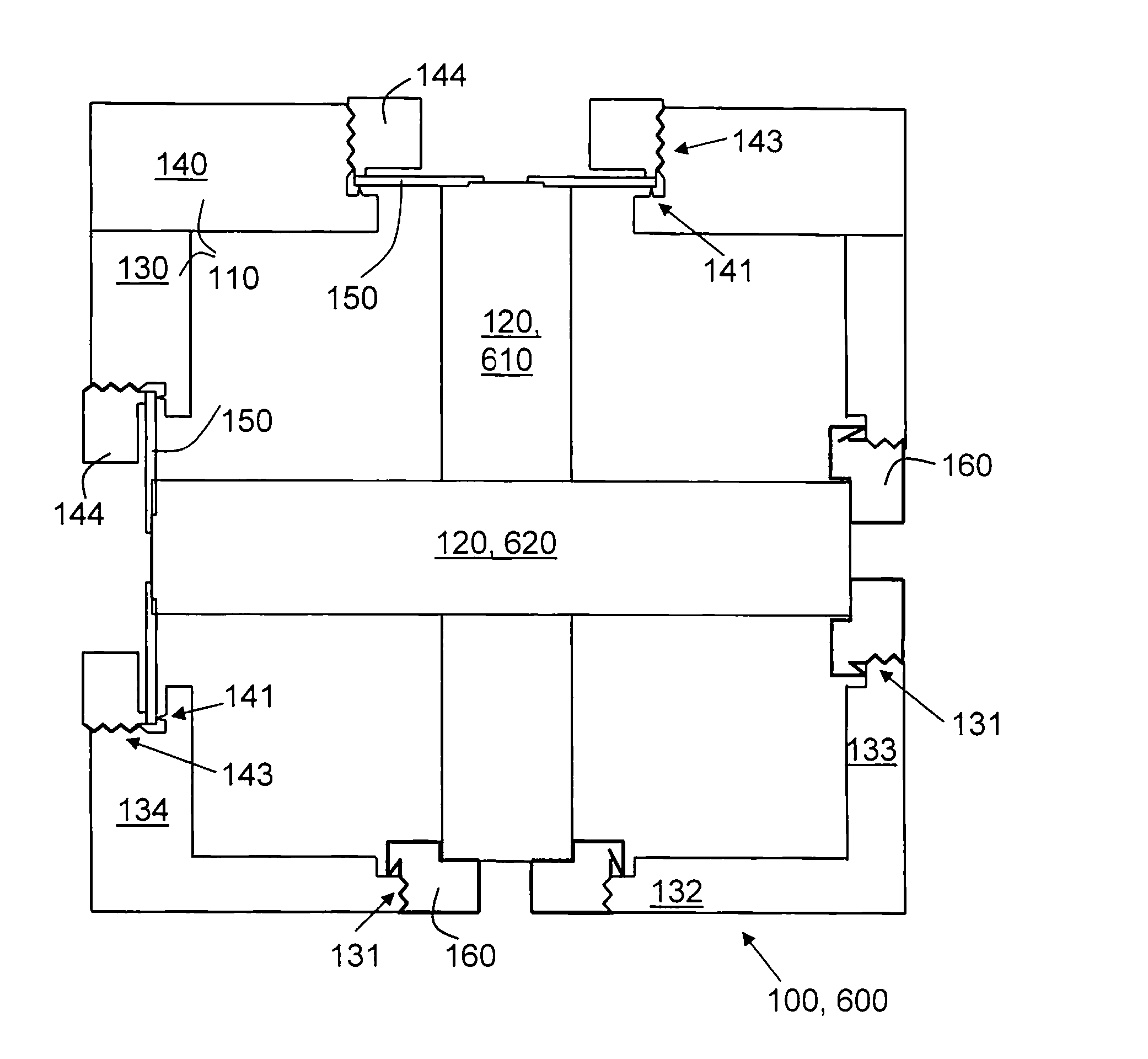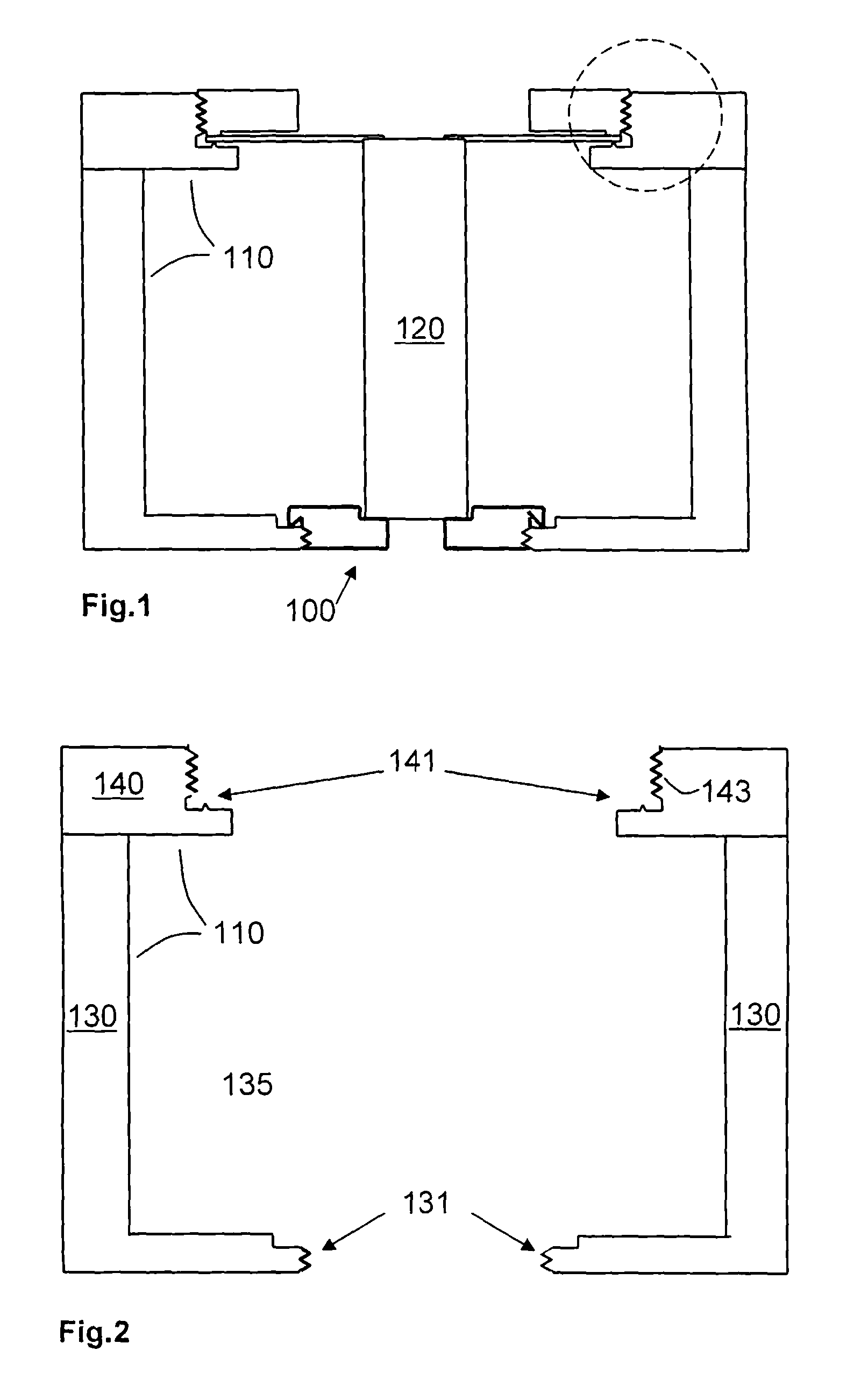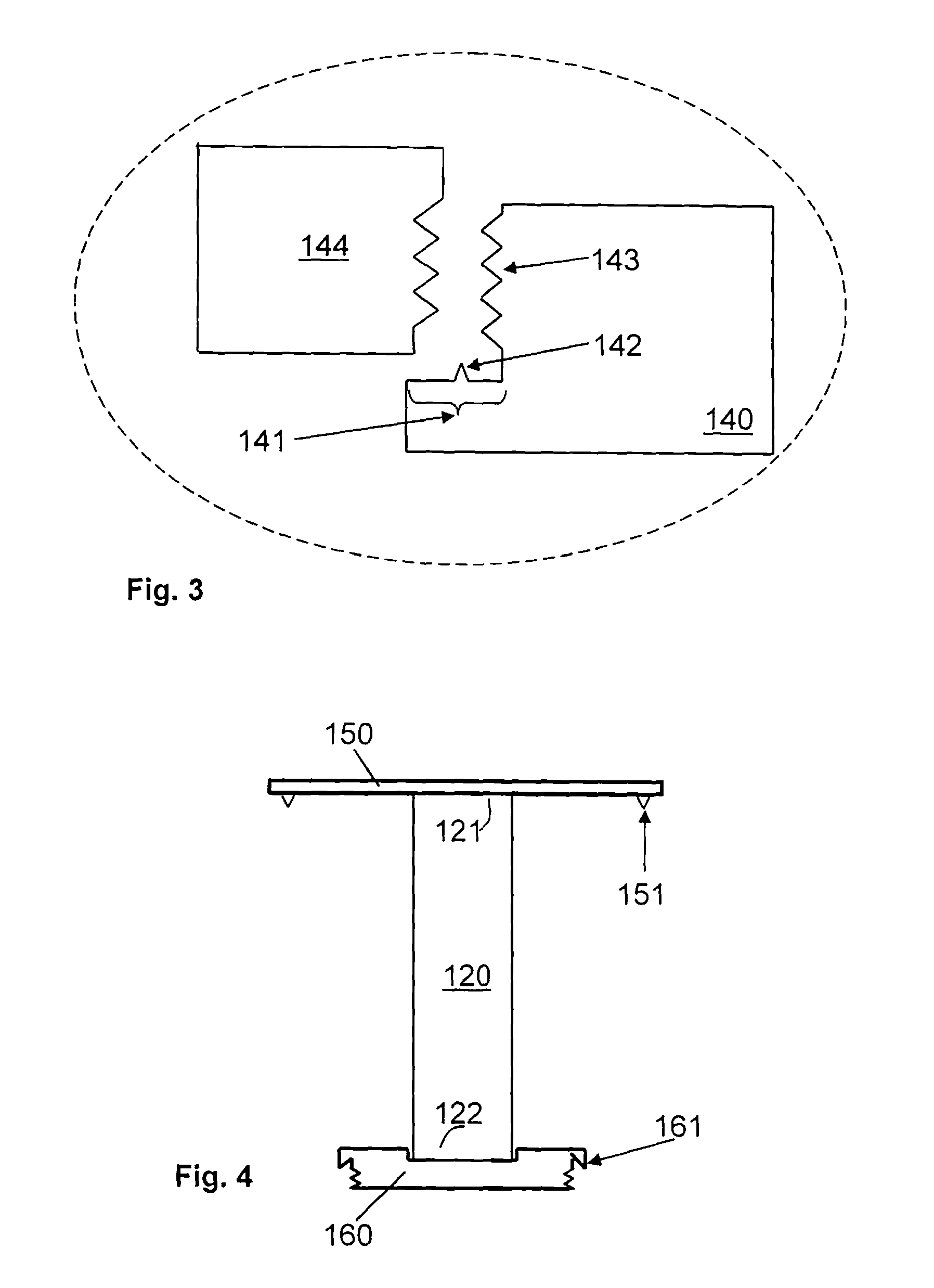Filter Assembly
a filter and assembly technology, applied in the field of filters, can solve the problems of inability to replace the dielectric rod, limited power handling capability, and inability to achieve the te01d mode at 1.9 ghz frequency, and achieve the effects of reducing scrap cost, less tolerance sensitive, and small filter assembly
- Summary
- Abstract
- Description
- Claims
- Application Information
AI Technical Summary
Benefits of technology
Problems solved by technology
Method used
Image
Examples
Embodiment Construction
[0033]The invention is defined as a filter assembly which may be put into practice in the embodiments further described below.
[0034]FIG. 1 presents a cross section of a filter assembly 100 according to some embodiments of the invention. The filter assembly 100 comprises a filter chassis 110 and at least one dielectric rod 120. The filter assembly 100 according to the present solution may comprise a plural of dielectric rods 120, such as e.g. as many as 30. However, only one dielectric rod 120 is depicted in FIG. 1. The filter assembly 100 may be a TM single mode resonator.
[0035]FIG. 2 depicts a cross section of the filter chassis 110. The filter chassis 110 may comprise a filter housing 130, a filter cavity 135 and a filter cover 140. Examples of filter covers 140 are e.g. a lid, cap, cover. The filter housing 130 may be adapted to be arranged together with the filter cover 140. The filter housing 130 and filter cover 140 may be made of e.g. silver plated copper on aluminum. The fil...
PUM
 Login to View More
Login to View More Abstract
Description
Claims
Application Information
 Login to View More
Login to View More - R&D
- Intellectual Property
- Life Sciences
- Materials
- Tech Scout
- Unparalleled Data Quality
- Higher Quality Content
- 60% Fewer Hallucinations
Browse by: Latest US Patents, China's latest patents, Technical Efficacy Thesaurus, Application Domain, Technology Topic, Popular Technical Reports.
© 2025 PatSnap. All rights reserved.Legal|Privacy policy|Modern Slavery Act Transparency Statement|Sitemap|About US| Contact US: help@patsnap.com



